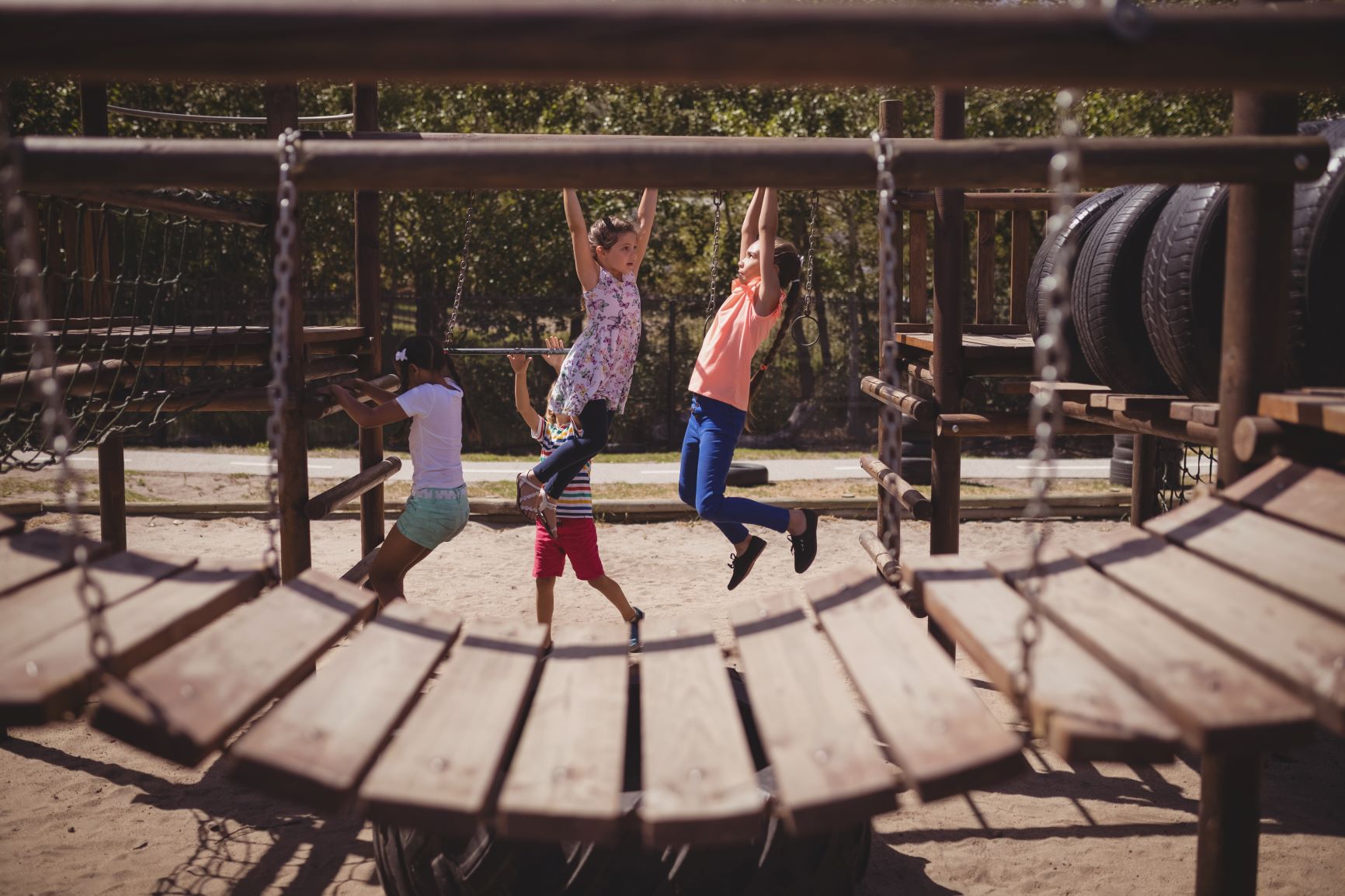Play spaces – playgrounds, skateparks and pumptracks – are valuable community amenities.
They bring people together and give children opportunities to play, learn and have fun.
Playgrounds can be regarded as critically important in terms of discharging children’s high energy, positive self-development, exploring skills, self-esteem and success of children, and cognitive, physical and psychological development of children. Playgrounds enhance these skills and provide options for children to learn new things.
Skateparks offer multiple benefits for the individual. They are a form of self-expression, are inexpensive, are challenging, can be social, and fun. Skateparks require specialised design and construction requirements.
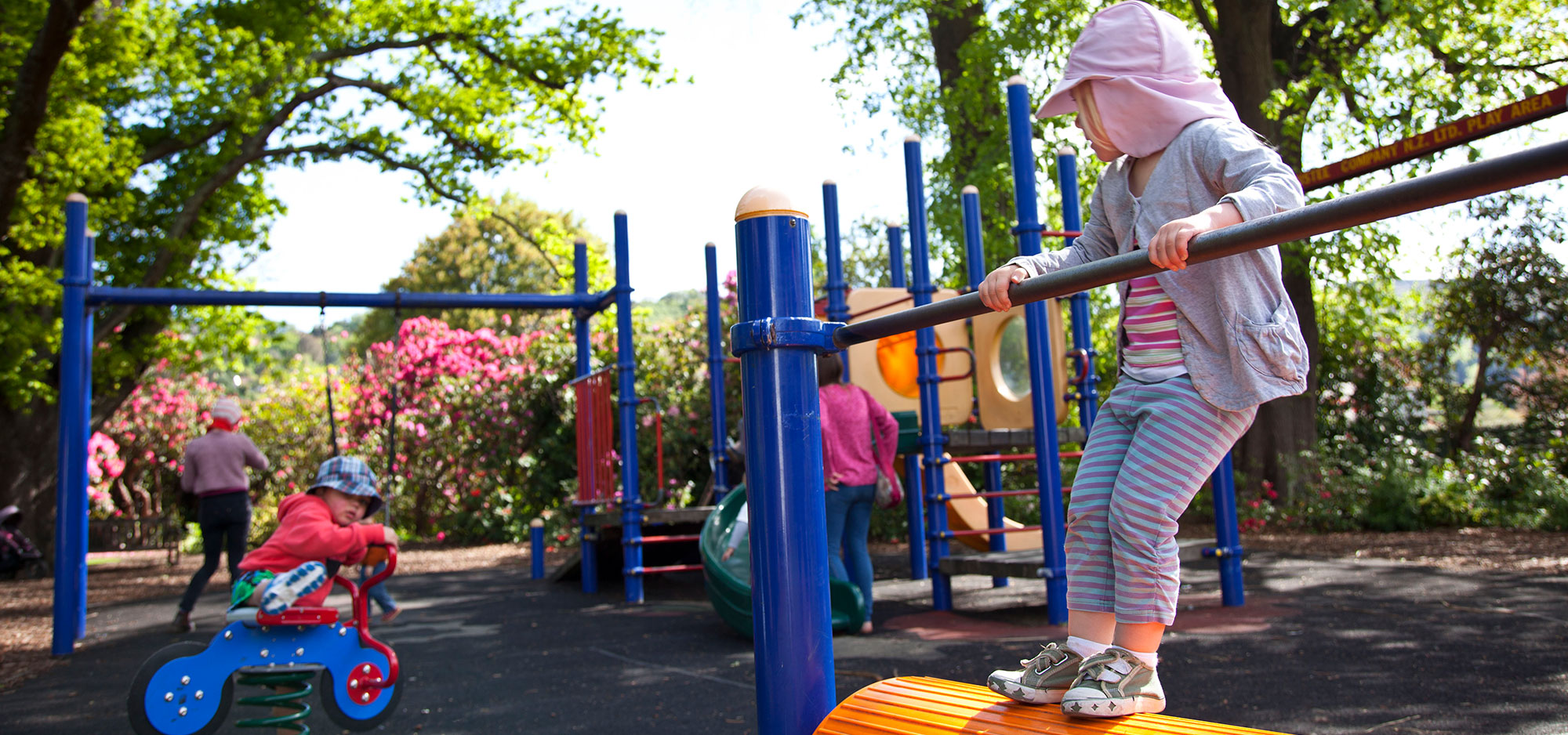
Play can mean different things and we have different categories of play:
- Active
- Imaginative/creative
- Social
- Exploratory/educational
- Quiet
- Free
- Natural
Play Space survey results
Community survey
We received 904 responses to this survey which gives us a better understanding of the community’s views on our play spaces. Most respondents think the DCC should invest in skateparks, equipment for children with disabilities, children of older ages, more challenging play and new play spaces such as destination playgrounds, pump tracks, parkour, BMX and a mountain bike skills area. Many respondents wanted a new play space in the central city.
They say spending on play equipment should be prioritised rather than things like seating, shade sails and water fountains.
Below is an overview of the results we collected.
Play Space Plan survey resultsDefinitions
-
Active play
Typically using fixed equipment for swinging, climbing, hanging, balancing, jumping, stepping, sliding. The type of play equipment includes swings, slides, bars, climbing frames, roundabouts, flying fox.
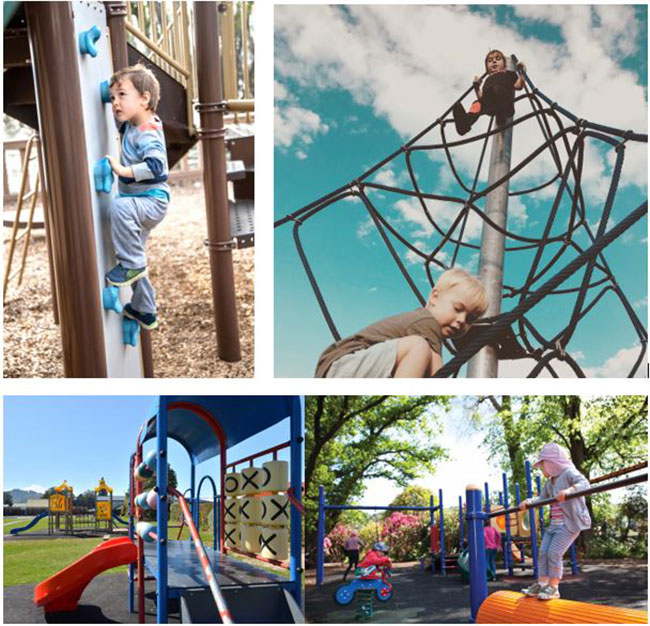
-
Imaginative and creative play
Involving made-up games or role playing that enable children to use their imagination. The play equipment will enable opportunities for role play through themes and familiar objects. The type of play equipment includes forts, play houses, natural stages/amphitheatres, trees, themed multi-play equipment e.g. nautical, vehicles.
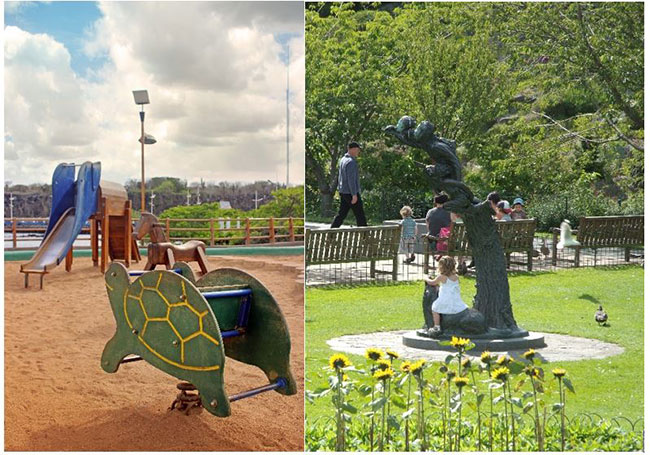
-
Social play
Communicating and interacting encourages social interaction, like during a game when everyone will follow a set of rules, tag, taking turns, chase, hide and seek. Types of play equipment include seesaw, multi-play structures, grassed open space.
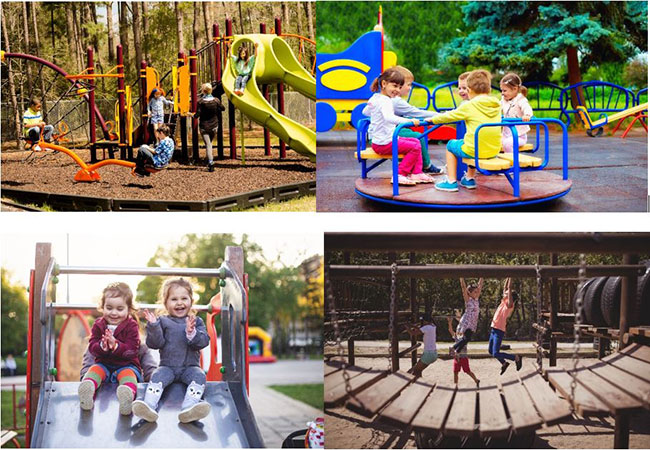
-
Exploratory and educational play
Stimulating sensory play and controlling different materials in the environment, like digging holes or constructing shelters and pully systems. Types of equipment include plants, rocks, sand, water, trees, musical or interactive play equipment.
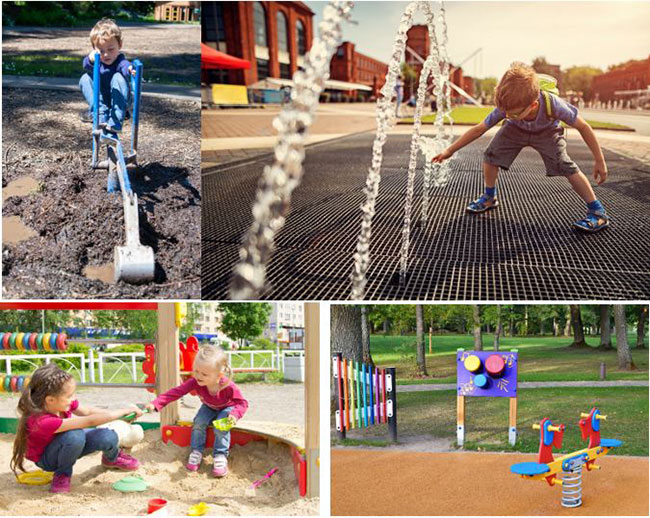
-
Quiet play
Includes talking or playing a sit-down game to build confidence and enable an individual or group to quietly observe other children before joining in. Quiet play is equally important for junior and senior children. The types of play equipment include clusters of plants, seating, shading, playhouses, forts, and individual play equipment.
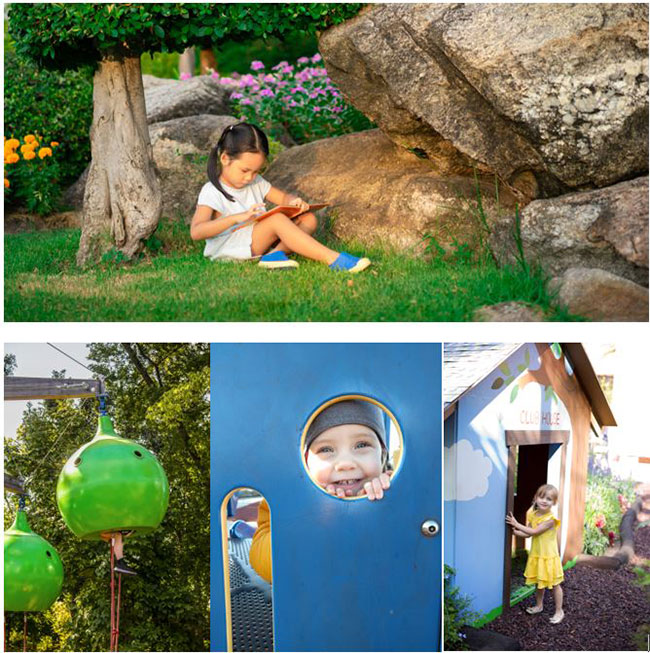
-
Free play
Discovering physical flexibility, slightly different than active play as it enables non-prescribed movement in open space. The main difference between free play and active play is the child determines movement, not the play equipment e.g. slide – you go up or go down. The types of play equipment include grassed slopes, tunnels and open space, concrete spaces, basketball hoops, tennis nets, skateparks, walls, bars, beams that enable parkour, pump tracks, and adventure play equipment.
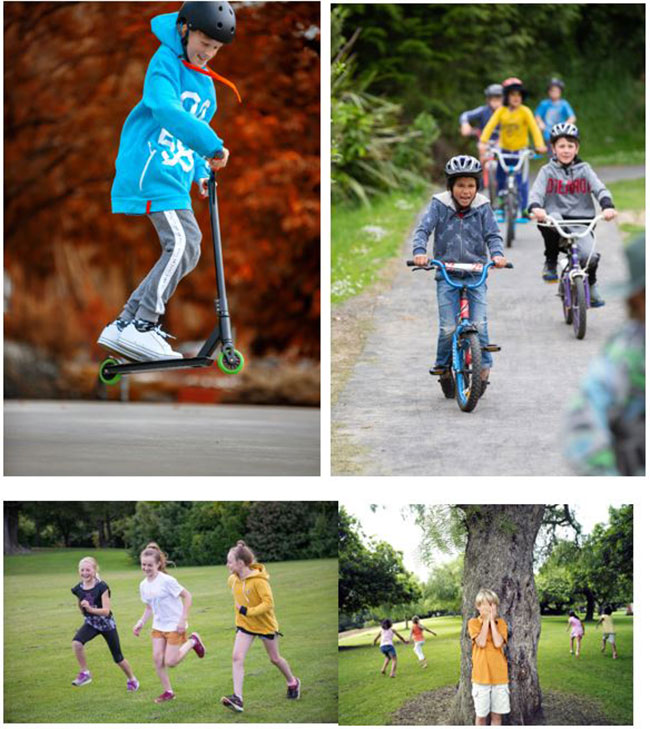
-
Natural play
Stimulating sensory play and imagination by providing different scents, textures, shapes and colours. The types of play equipment include plants, trees, sand and water.
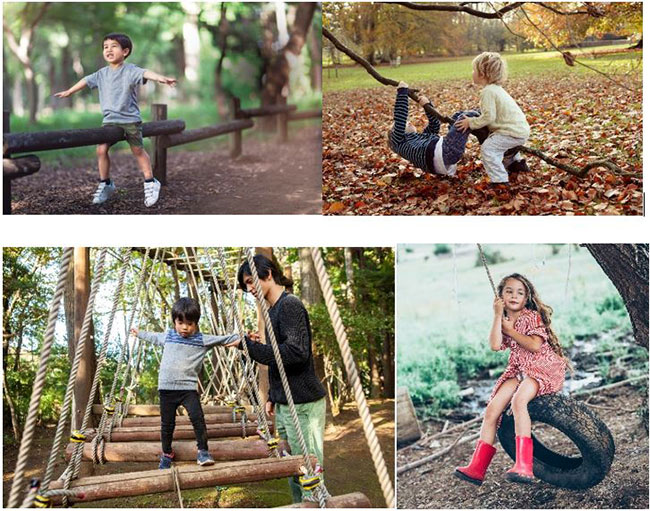
Playgrounds and skateparks
We also have different types of playgrounds and skateparks. See below for the various definitions.
-
Playgrounds
Playgrounds are areas with purpose-built children’s playground equipment predominantly for young children. A playground may have just one single item of equipment or several items located together. Where there is a large park there maybe more than one playground on the site. A playground contains equipment permanently anchored to the ground. A playground is not adult exercise equipment, fallen tree trunks left on parks, skateboard facilities, bike or BMX facilities, water play parks or zero depth splash pads.
-
Destination playgrounds
As the premier playground, people will travel to these parks for the play opportunities they provide. With open space play, there is a large selection of play equipment which will suit a wide range of ages and abilities.
These playgrounds also contain several amenities, for example, toilets, rubbish bins and drinking fountains.
Destination playgrounds are capable of hosting large numbers of people and have easy access, including paths suitable for disability access and vehicle parking.
-
Community playgrounds
These playgrounds provide the community with a wider range of play equipment than their local neighbourhood playground, along with a variety of amenities.
-
Local neighbourhood playgrounds
Local neighbourhood playgrounds are found amongst residential homes, which are generally used by those who live within walking distance. These playgrounds provide an outdoor play area with some play equipment.
-
Destination skateparks
Destination skateparks provide the community with a wide range of skate equipment, designed to meet all skill levels, along with a variety of supporting amenities such as seating, shading, bins, water fountains and parking.
These skateparks incorporate a range of design variations between the different disciplines (street and park) and should be able to accommodate both community and national events. These parks will have space to enable the skater to perform a trick and then have 8 to 10 lines to choose from after the trick is completed. If there is a beginner area it will be separated to avoid collisions.
It is likely that destination skateparks may also provide a point of interest, such as skateable art, or a bespoke piece, e.g. historic skateboarding terrain such as a unique 70s bowl.
-
Community skateparks
Community skateparks are smaller in size, suitable for beginners, providing training facilities to develop their skills but primarily catering for intermediate children who are 10+ years of age who can travel some distance to the park.
These skateparks incorporate some design variations between the different disciplines that enable the community to host smaller events.
-
Local skate facilities
Local skate facilities are small skating areas (minimum size 250m2) that can accommodate 10 to 15 skaters at a time.
Dependant on size and shape of the space, the equipment might only support one skate discipline. It may be designed using ‘off-the-shelf’ components for cost efficiency.
These local facilities fill the gaps between the community and city-wide destination skateparks. They cater primarily for beginners to intermediate skaters under 10 years of age who live within 2km of the facility.
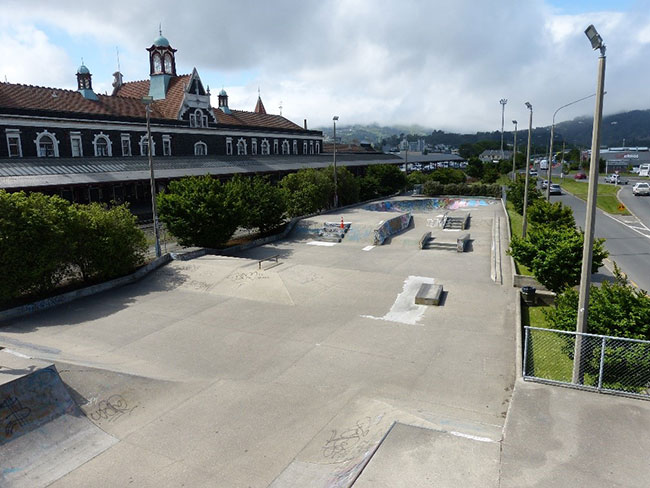
Our proposed service levels for playgrounds and skateparks
-
Destination playground
This type of playground will typically have:
- a large open space to play
- 8+ pieces of play equipment
- play equipment that caters for the three different age groups (0-4, 5-9 and 10-14+)
- all-inclusive play equipment
- play equipment to support the seven types of play
- active
- imaginative/creative
- social
- exploratory/educational
- quiet
- free
- natural
Destination playgrounds will also have the widest range of facilities, as families are likely to spend a whole day there. Therefore, destination playgrounds will provide the following:
- signage
- toilets
- rubbish bins
- seating
- shading (either sails/natural shading where appropriate)
- drinking fountains
- food and beverage facilities that could include commercial activities
- parking
-
Community playground
This type of playground may have:
- an open space to play
- 3-5 pieces of play equipment
- play equipment that caters for the three different age groups (0-4, 5-9 and 10-14+)
- a piece of all-inclusive play equipment where possible
- play equipment to support two or three different types of play e.g. active, social and natural play
At community playgrounds, you would expect to find fewer community facilities than destination playgrounds as they are closer to where people live. Typically, these playgrounds will have:
- signage
- seating
- rubbish bins
-
Local playground
This type of playground may have:
- 2-3 pieces of play equipment
- play equipment that predominately caters for two age groups (0-4, 10-14+)
- play equipment to support a one or two different types of play e.g. active and social play
Local playgrounds are like community playgrounds but have slightly less equipment and fewer community facilities. Typically, these playgrounds would have:
- seating
- rubbish bins
-
Destination skatepark
This type of skatepark will typically:
- Be a minimum size of 1700m2
- Meet the needs of the intermediate and advanced/competition level skaters that are 13+ years of age
- Have a separate beginner’s area (where space allows approx. 450m2)
- Have a range of design variations between the different disciplines (street and park)
- be able to accommodate both community and national events
Destination skateparks will also have the widest range of facilities, as groups are likely to spend a whole day there. Therefore, destination skateparks will provide the following:
- signage
- toilets
- rubbish bins
- seating
- shading (either sails/natural shading where appropriate)
- drinking fountains
- parking
-
Community skatepark
This type of skatepark will typically:
- Be a minimum size of 950m2
- Meet the needs of beginners and intermediate skilled children who are 10+ years of age
- Incorporate 3-5 design variations between the different disciplines (street and park) e.g. street course such as ledges, stairs and rails and ramps.
At community skateparks, you would expect to find fewer community facilities as they are closer to where people live. Typically, these skateparks will have:
- signage
- rubbish bins
- seating
-
Local skate facility
This type of skatepark will typically:
- Be a minimum size of 250m2
- Accommodate 10-15 skaters at a time
- Support maybe only one skate discipline e.g. park skating or terrain/obstacles
- Be limited to two or three pieces of equipment/obstacles e.g. a mini ramp, half pipe and/or, some rails.
At a local skate facility, you would expect to find fewer community facilities as they are closer to where people live. Typically, these skate facilities would have:
- seating
- rubbish bins
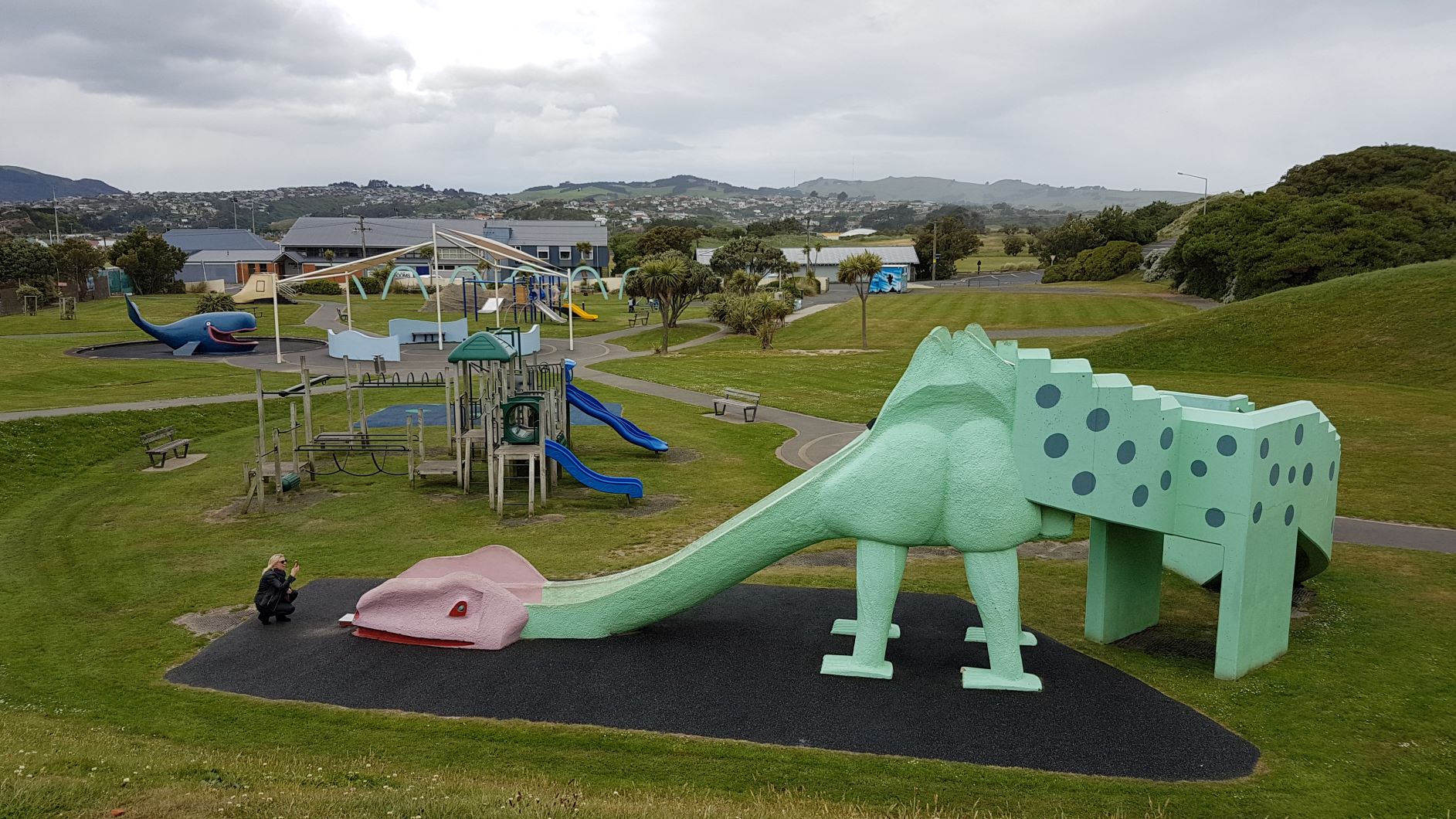
Research findings
Dunedin has 110 playgrounds, 12 skateparks and one pump track. While we know the locations of these ‘play spaces’, we need to have a better understanding of how well they’re working for our communities.
We have already done some research into the distribution, accessibility and play value and you’re welcome to see the results (see below). This research is helping us form some ideas but it’s still important for you to have a say.
-
What types of play are supported in our playgrounds?
Of the 111 playgrounds across the city we have 492 pieces of play equipment. We have three Destination playgrounds – Mosgiel Memorial Gardens, Marlow Park and Woodhaugh Gardens in the Town Belt.
All of our Destination playgrounds provide a sufficient amount of play equipment. Our Community playgrounds also provide enough play equipment. The local playgrounds are the playgrounds that vary the most, ranging from as little as one piece of equipment to as many as five or six pieces of equipment.
However, assessing the amount of play equipment is enough to determine the value of play that the playground is providing to children. The analysis has also looked at the types of play our playgrounds support.
The chart below illustrates that we provide a lot of play equipment to support active (31%) and social play (27%).
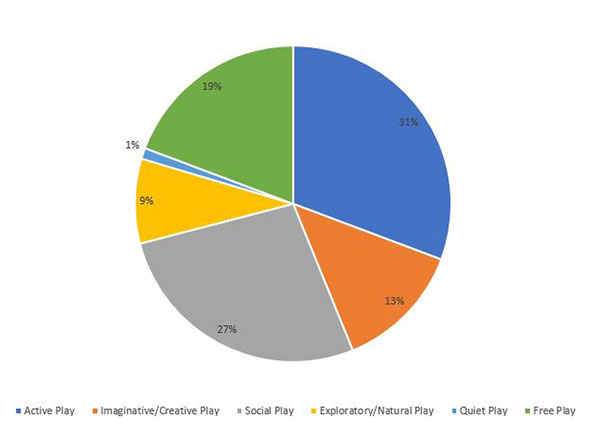
Play Types (P) Active Play Imaginative/Creative Play Social Play Exploratory/Natural Play Quiet Play Free Play 31% 13% 27% 9% 1% 19% Active play is important because it helps to develop fundamental movement skills, such as balance, coordination and reaction time. It also builds strong hearts, muscles and bones, and increases mental wellbeing. Social play is important because it helps children hone their communication skills as they figure out how to negotiate group dynamics and follow set rules.
There are opportunities to provide a greater variety of play in the city by purchasing new equipment that promotes nature and explorative play, imaginative play, and quiet play, along with enhancing our existing play equipment that already support active play, social play and free play. However, it is not possible, or desirable to provide the same types of play experiences at every playground.
-
What age group are we providing play equipment for?
Despite evidence that play can benefit anyone, most of our playgrounds are targeted at zero to nine-year olds as illustrated in the chart below.
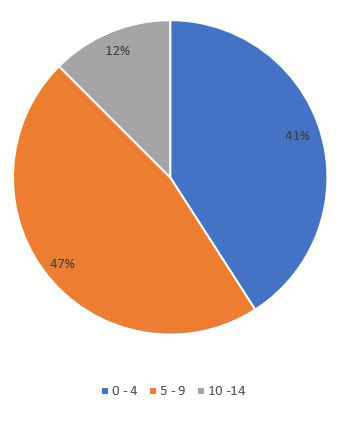
0 - 4 5 - 9 10 -14 41% 47% 13% Our playgrounds associate playground equipment with young children. However, play for senior children aged 10-14 provides opportunities to take risks, practice decision-making and problem-solving skills, make mistakes (and learn from them), build confidence, and overcome fear.
The senior play equipment we currently provide is limited to swings, some climbing frames, skateparks and open areas for ball games. The types of new play equipment dedicated to young people aged 10-14 that we could provide are:
- Shelters, providing safe and comfortable places to hang out
- Pump tracks
- Equipment to support parkour, or gym activities
- Adventure playgrounds and training circuits
- Bigger equipment that supports more challenging climbing, swinging and sliding.
We could also spend more money on our skateparks.
-
What about our the skateparks?
Skateboarding’s popularity is growing rapidly throughout the world. Skateparks are places where children can escape the pressure of organised sport, participate in an energetic activity, and build self-confidence. Now that skateboarding has been added to the 2020 Olympics it suggests there is a shift in attitude.
Dunedin has 12 skateparks. These range from a single small ramp in Macandrew Bay to a skatepark facility in the central city.
Our skateparks are generally in average condition. However, we have two Destination skateparks (Thomas Burns and Mornington) that are in poor condition with major cracks and rough/damaged concrete.
These issues limit how our skateparks can be used. We would like to see more money being spent on our skateparks as a priority because this will add to the array of sporting and social facilities that our youth can enjoy.
-
Do our playgrounds support inclusive play?
No two children are the same, but all children like to play, regardless of their ability, age, or culture. The extent to which our playgrounds can be inclusive will vary across the city. Destination playgrounds are likely to be the only completely inclusive playgrounds. However, all other Community playgrounds should be designed to be as welcoming and as inclusive as possible. Adopting this approach may be more challenging at Local playgrounds where we would expect to find only one or two pieces of play equipment and they are generally smaller.
Currently, only 6% of our playgrounds provide equipment for inclusive play as illustrated in the chart below.
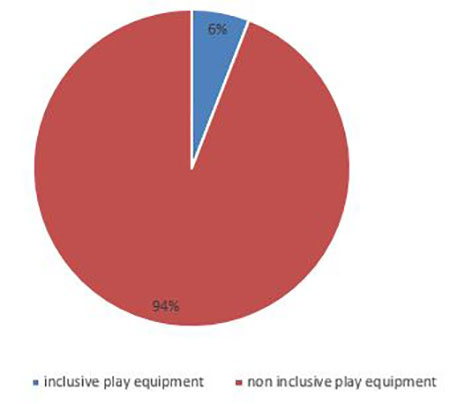
The types of play equipment largely support movement, such as:
- a spinny that provides good position retention
- a basket swing that allows for either seated or lying down positions supporting those with less developed muscle tone
- a roundabout at floor level that allows a wheelchair to be rolled on
We would like to expand our moving play equipment and to also include sensory play, for example plants and play equipment that stimulate other senses such as hearing or touch and allows for a different type of inclusive play.
-
Should everyone over 14 play too?
It’s important for adults to play as well. It has been shown to release endorphins, improve brain functionality, and stimulate creativity. It can even help keep adults feeling young and energetic. Plus, it is a good way to spend time and have fun with children.
-
Where are our playgrounds?
To see where our playgrounds are check the Playgrounds in Dunedin
While there is no universally accepted ratio of playgrounds per 1000 children (under 15), Yardstick, a collaborative partnership with recreation-industry organisations, carry out an annual benchmarking exercise against other councils of a similar size to Dunedin. Findings from the 2017/18 exercise identified a group median of 4.1 playgrounds per 1000 children.
The highest was Gore District Council with 10.8 playgrounds per 1000 children. The lowest was Whangarei District Council with 2.3 playgrounds per 1000 children.
Dunedin City Council has 5.9 playgrounds per 1000 children which is higher than the group median. This is one playground per 200 children which is right for a city of this size.
However, a few good larger playgrounds maybe better than lots of underdeveloped small ones. Currently, we have 10 playgrounds with only one piece of play equipment (see image below as an example).
Through research we have discovered there are parts of the city that have a good number of playgrounds, some suburbs have an over-supply and other suburbs do not have enough. The analysis we did considered these factors:
- Social deprivation
- Households without cars
- Population
- Housing density and average size
- Number of schools
It’s important to note, however, that this is only a starting point for further investigation. For example, the data suggests that the Peninsula has an over-supply of playgrounds, but this could be due to the area being split between urban and rural locations.
The results also indicate that City Rise has an under-supply of playgrounds but there are less than 400 children in City Rise, in comparison to greater South Dunedin that have over 4000 children which illustrates that further discussions are required with the community.
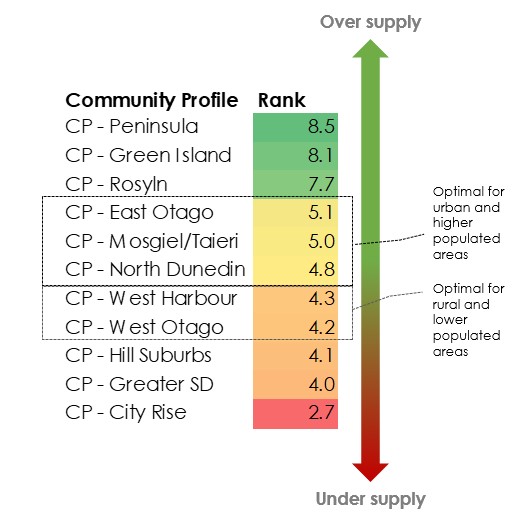
CP - Peninsula 8.5 CP - Green Island 8.1 CP - Roslyn 7.7 CP - East Otago 5.1 CP - Mosgiel/Taieri 5.0 CP - North Dunedin 4.8 CP - West Harbour 4.3 CP - West Otago 4.2 CP - Hill Suburbs 4.1 CP - Greater SD 4.0 CP - City Rise 2.7 -
Should we spend more money on other facilities?
The provision of other community facilities at our playgrounds such as toilets, seating, shelter, fences and picnic facilities can greatly enhance play spaces. However, there is a trade-off between the cost of playground equipment and the cost of shade sails or toilets. It is not affordable or practical to provide these facilities at all playgrounds and the more we invest in community facilities, the less we can invest in play equipment.
Presently, some of our playgrounds do not provide the basic community facilities as noted in the chart below:

Number of playgrounds with no rubbish bin 54 Number of playgrounds with no seating 22 Number of playgrounds with no signage 37 However, if families were prepared to take responsibility for their own comfort it raises a question about what community facilities Council could prioritise.
Recently, there has been interest from the community in whether we should provide shading and fencing at our playgrounds. The New Zealand Cancer Society recommends providing shade over children’s play equipment in summer, in conjunction with personal sun protection. The shade can be provided artificially, or naturally with trees.
Of the 110 playgrounds across the city, only two currently have an artificial shade structure. 49 playgrounds have trees that may provide some form of natural shading. This is the preferred solution.
The approximate cost to provide a shade sail over a picnic table at a local playground is in the region of $15,000. To extend shade cover over the play equipment could be at least $25,000. Extrapolating this out to the 60 playgrounds with no shading, the cost would be in the region of $1.2 - $2.1 million. This excludes the cost of removing the shade sail during the winter, as well as the cost to repair or replace damaged or vandalised sails.
